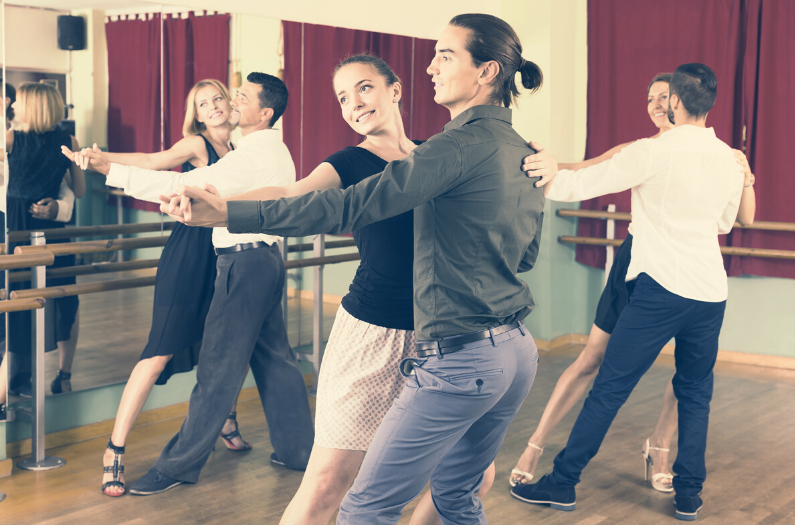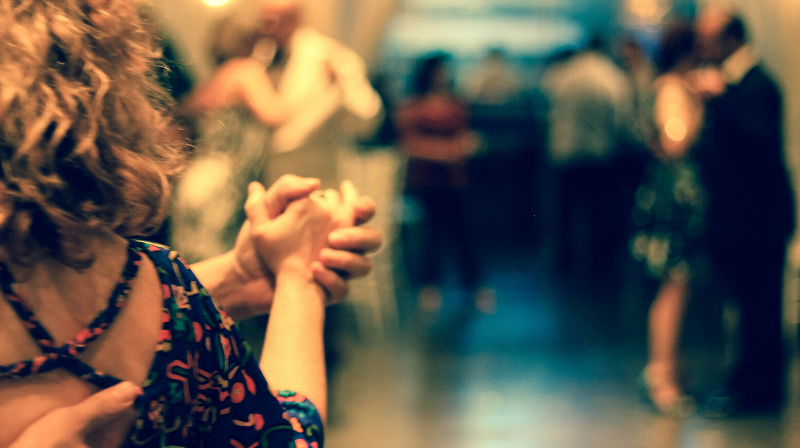
As you may already know, I am a huge advocate of rhythm and dance for improving many of the symptoms of Parkinson’s disease. I feel so strongly about it that I built a dance studio in my boxing gym so that my students could address their symptoms in every proven effective way. We even have the PD Rebel Performance Project, a performing dance, drumming and singing company to encourage those who want to share their gifts (some from the past and some newly learned) with the world.
A variety of studies show mounting evidence that music and dance have positive effects on Parkinson’s symptoms (both motor and non-motor). There is also a strong connection between music and the dopamine systems in the brain.
Take the enjoyment of music, add dance to it, and you have a great therapy that is fun, can be shared in a social setting, and brings couples together. With PD, sometimes intimacy can get lost between partners. Ballroom dance (especially tango) encourages the couple to embrace each other. Closeness for humans is so important, and especially so for people with Parkinson’s.

One of the first dance styles to be studied was Argentine Tango, thanks to Dr. Madeleine E. Hackney, a Research Scientist with the Center for Visual and Neurocognitive Rehabilitation at the Atlanta VA. A life-long dancer and teacher, Madeleine wanted to see if Argentine Tango could possibly improve balance for people with PD. The results of this (and many other studies) concluded that social dance, but especially tango, can improve balance, functional mobility, and some cognitive issues.

I attended a workshop that Dr. Hackney gave a few years ago. She said, “Tango requires specific steps that involve rhythmically walking forward and backward. This may be particularly helpful for walking difficulties, especially for freezing of gait and to prevent backward falls. In addition, Tango requires working memory, control of attention, and multitasking to incorporate newly learned and previously learned dance elements, to stay in rhythm with the music, and maneuver around others on the dance floor”.
We have one of the top Tango instructors in our area. She started Parkinson’s Tango classes back in 2009, when there weren’t many other exercise classes for people with PD. Rachel Lidskog, owner of Dance with Joy studios, has offered to teach Argentine Tango here at the Rebel Fit Club. She will also be teaching other ballroom dance classes. Stay tuned for this opportunity to learn from a patient and experienced instructor. No need to have a partner.
If you live outside of the Portland area, I suggest researching local Argentine Tango instructors. Make sure they can make modifications for people with balance issues, and perhaps have a little slower teaching style if the student has some cognitive concerns. Also, confirm that the class can accommodate a single person attending if you don’t have a dance partner.
Everyone can dance, Parkinson’s can not steal that from you.
– 
Resources:
BMC Neurol. 2015; 15: 226.
Published online 2015 Nov 5. doi: 10.1186/s12883-015-0484-0 Argentine tango in Parkinson disease – a systematic review and meta-analysis
Désirée Lötzke, Thomas Ostermann, and Arndt Büssing
J Neurol Phys Ther. 2007 Dec;31(4):173-9. doi: 10.1097/NPT.0b013e31815ce78b. Effects of tango on functional mobility in Parkinson’s disease: a preliminary study.
Hackney ME1, Kantorovich S, Levin R, Earhart GM.
Blandy, L. M., Beevers, W. A., Fitzmaurice, K., and Morris, M. E. (2015). Therapeutic argentine tango dancing for people with mild Parkinson’s disease: a feasibility study. Front Neurol. 6:122. doi: 10.3389/fneur.2015.00122